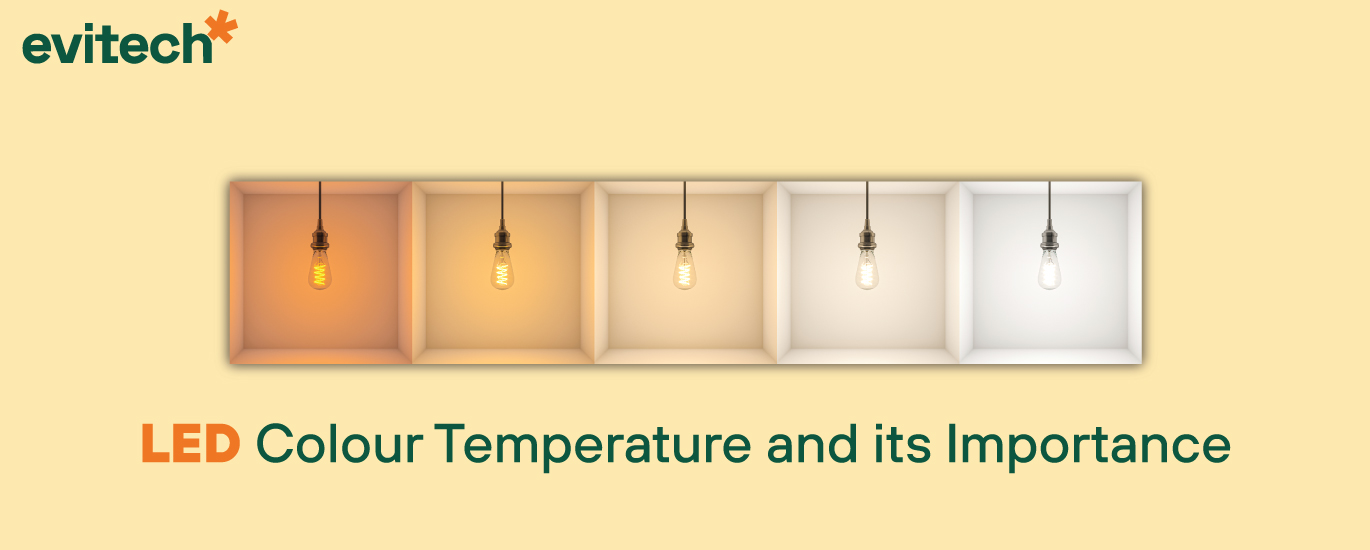LED Colour Temperature and its Importance
Colour temperature is a concept from the physical sciences that assigns a numerical value to the colour of lighting. It is worth mentioning that it does not describe the lamps’ temperature.
You have surely noticed that there are many types of white light. For example, halogen bulbs give off a slight yellow hue, while most fluorescent bulbs have neutral white or slightly blue tones.
Incandescent bulbs are still preferred in certain designs for their warm tone, but there are already LED bulbs capable of imitating them.
LED spotlights can be made with any shade of white light, from warm to cool. Even LED bulbs to allow you to adjust the colour temperature and intensity of the light according to the user’s preferences.
As mentioned above, colour temperature is a physical science concept used to describe the colour of emitted light. The specifications of lamps and luminaires can be found as CCT, for its acronym in English (correlated colour temperature).
- The CCT is the temperature to which a theoretical object with zero light reflection on its surface would have to be heated to make it glow a specific hue.
- For example, if a lamp has a CCT of 2700 Kelvin, this theoretical object would glow the same hue if heated to 2700 K.
Warm, Neutral and Cold Light Applications
When purchasing an LED product, it is important to check its colour temperature. In this way, the right colour for each application is ensured:
· Warm White Light: Lamps with CCT below 3000K produce warm tones, which is suitable when looking to create a relaxing environment. For this reason, warm light is common in homes, hotels, restaurants and other similar locations.
· Neutral White Light: Lamps with CCT close to 4000K produce neutral shades of white light. This tone is ideal in spaces where concentration is required for long periods, which makes it ideal for lighting offices and classrooms.
· Cool White Light: When the CCT exceeds 5000K, the light begins to take on a slight blue hue. Cold light offers the highest level of visibility but can be fatiguing for long periods. It is generally used for outdoor lighting, precision industrial work, or in art galleries.
It is worth mentioning that “warm” tones refer to low CCT values, while “cool” tones refer to high values. For example, a lamp with a 1000K CCT would emit red light, while one with a 15,000K CCT would emit blue light.
Colour temperature is an important factor in lighting designs, as it influences the psychological state and productivity of the human being.
There are LED products for the entire CCT range. 2700K bulbs mimic incandescent bulbs, and there are 5000K+ outdoor fixtures to provide clarity at night.
It is very important to select a product with a suitable light tone. For example, if cold light is used in bedrooms, it can cause insomnia problems. In the same way, the use of very warm light in an office can cause productivity problems
Latest Post
- Why do LED Spotlights Burn?
- What is the electricity consumption of LED Christmas lights?
- What are LED lighting towers, and What are their Applications?
- Using Natural Light in LED Lighting Designs
- Use of LED Lights in Domestic Houses
- Three Ways to Apply LED Light in Buildings
- Savings in Air Conditioning with LED Lighting
- Replacement of Halogen Spotlights by LED
- Recommendations when Buying LED Lights for Cars
- LED Lighting Connected to the Internet: A Promising Technology


